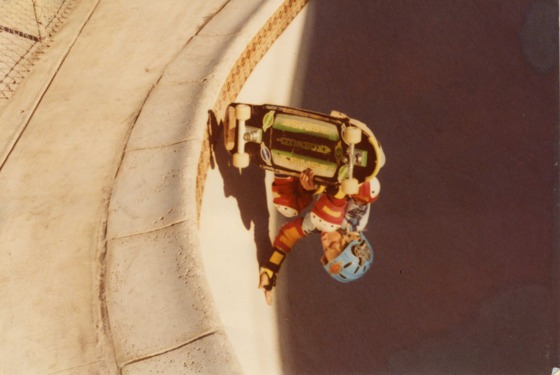 |
Tony Hawk.
(Photo: Courtesy of Tony Hawk) |
Right at the end of high school, I was starting to make pretty significant money and most of my classmates were trying to figure out what they’re gonna do for their jobs. You know, what college they’re going to go to. And then I kind of looked around and I thought, Well, I’m already making money, you know? Why am I going to go pursue something else? I mean, while I was still a senior in high school I was able to buy a house. I didn’t know how long it would last, but I guess I felt like I could strike while the iron’s hot and so I did. My parents wanted me to go to college, though, so that was a little tricky.
I’d always been somewhat nerdy — I did well in school and I was pretty shy around girls and such, so I wasn’t really outgoing, I wasn’t going to dances, I didn’t go to the prom or anything like that. And because I skated, that already labeled me as an outcast, like I was an outsider, because no one skated back then. But I found a community at the skate park that I identified with. You know, it was a total mishmash of other outcasts, but I felt at home because we shared this common interest and we had a common love and goal.
Around age 12 or 13 is when I started learning some pretty advanced tricks, and I was really small for my age, so it seemed absurd to other skaters that this little kid could do these difficult tricks. That’s how I got noticed. My hero at the time was a guy named Eddie Elguera, and because I thought he was the most revolutionary in terms of creating tricks, I went and learned all of his moves. That was the first go-to. I learned how to do the trick he created called a frontside rock-and-roll. Basically it’s a move where you rock the board over the top of the pool coping — this is all backyard pools back then that we were skating. So you rock the bottom of the board on top of the coping, and then you turn in the direction that’s unnatural to come back down — you have to do a 180. And that’s what the frontside refers to, and that is much more difficult than turning it the other way. Very, very few people could do frontside rocks back then, I think there were only like three people who could do it anyway.
I remember the first time I did it right. I was in the small, small bowl of my local skate park called Oasis in San Diego. I was some unknown little-kid amateur and the only other guys that could do it were pros. When I learned that, that actually moved me up in a competition division because the judges said, “This kid can do frontside rocks, he should be in the 3A, not the 2A.” There were all these different divisions back then. But learning a frontside rock did not feel like a career choice, I can tell you that.